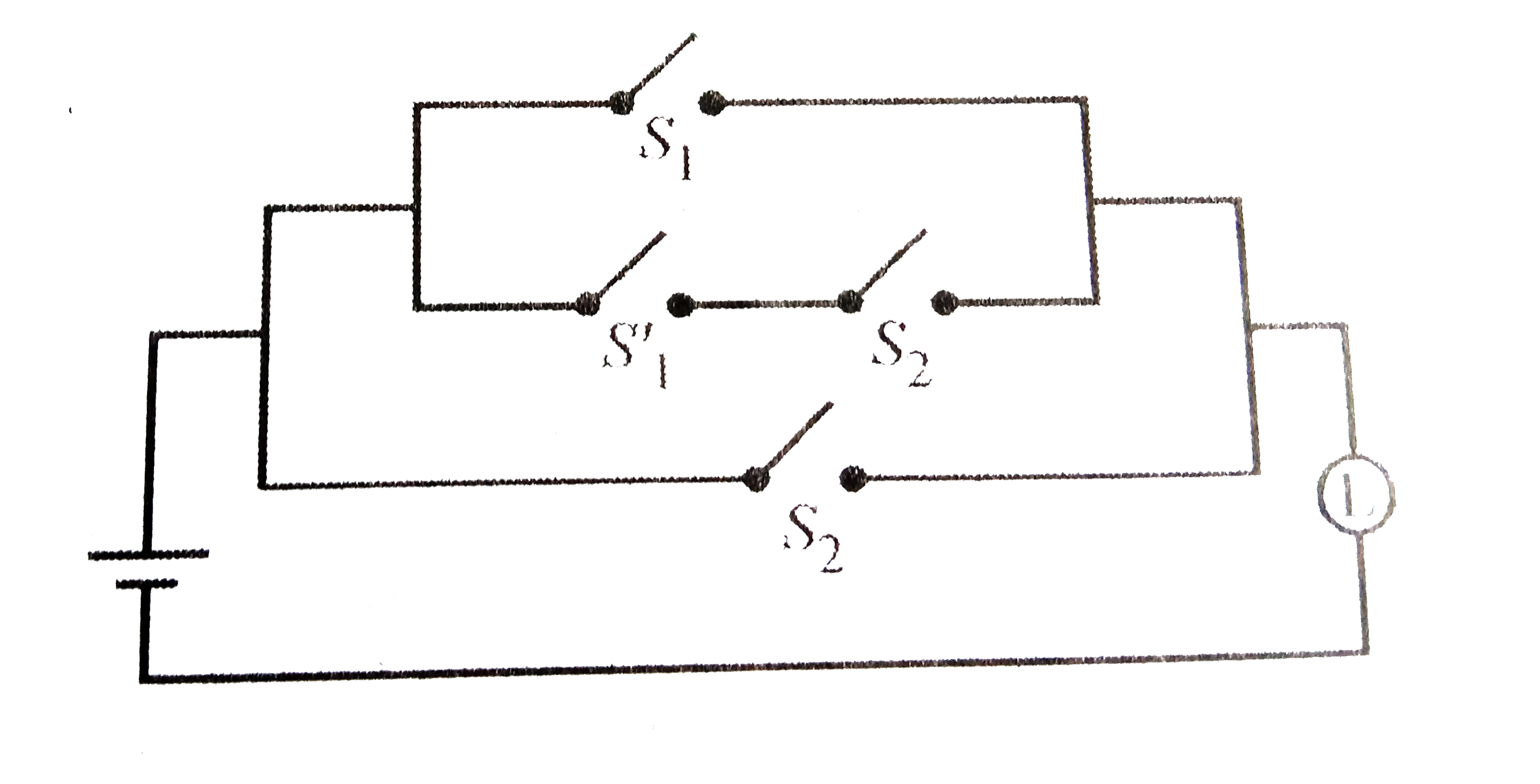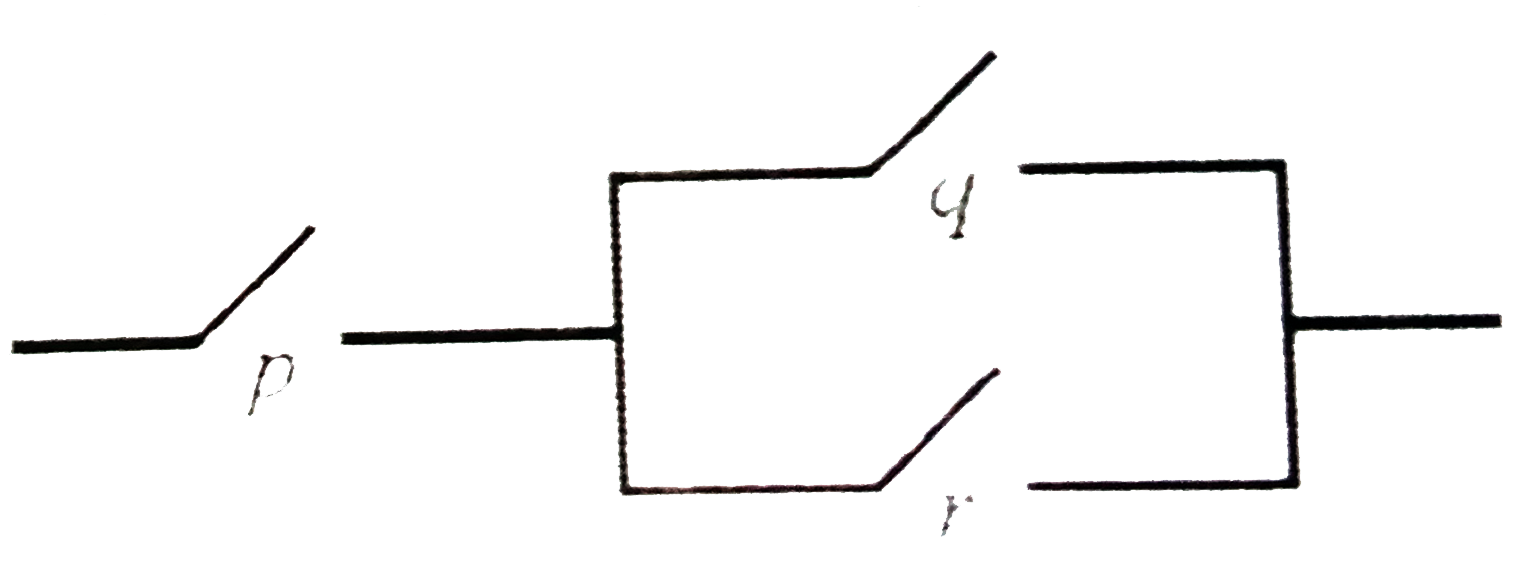Complete Solutions to MULTIPLE CHOICE QUESTION of chapter MATHEMATICAL LOGIC of Class 12 book with complete answers and questions
| Class 12 | MATHS |
| Chapter | MATHEMATICAL LOGIC |
| MARVEL | MULTIPLE CHOICE QUESTION |
| Number Of Questions | 78 |
| Academic Year | 2023-24 |
Ifp : Square of any real number is positive, q:5+4=11 and r: Square of any odd number is even, which of the following has truth-value T?
02:48View SolutionIf p: Mumbai is the capital of India, `q:x^(2)-5x-6=0` when x=2, r : 829 is divisible by 9, which fo them has truth-valueT?
03:20View SolutionIf P : Every natural number is whole number, q : Equation `x^(2)-3x+2=0` has two real roots, r :36 is a prime number, which of them has truth-value F?
03:08View SolutionIfp: `sin2theta=2sinthetacostheta" where "theta` is mango,q: `sin2theta=2sinthetacostheta`for all `theta`,r:`sin2theta=2sinthetacos theta`for all real values of `theta,`which of them is not a statement?
03:31View SolutionIf p: Rohit is tall q:Rohit is handsome, indicate the symbolic form of the following statement [ in
Rohit is tall and handsome.01:59View SolutionIf p: Rohit is tall q:Rohit is handsome, indicate the symbolic form of the following statement [ in Rohit is tall or not handsome.
01:57View SolutionIf p: Rohit is tall q:Rohit is handsome, indicate the symbolic form of the following statement [ in
Rohit is neither tall nor handsome.02:12View SolutionIf p: Rohit is tall q:Rohit is handsome, indicate the symbolic form of the following statement [ in
Rohit is tall, or he is short and handsome.01:59View SolutionIf p: Rohit is tall q:Rohit is handsome, indicate the symbolic form of the following statement [ in
It is false that Rohit is short or handsome.02:23View SolutionIf p: Rohit is tall q:Rohit is handsome, indicate the symbolic form of the following statement [ in It is not true that Rohit is short or not handsome.
03:15View SolutionIf p: Sam is fat,q : Sam is happy,indicate the symbolic form of the following verbal statements
Sam is thin but happy.01:47View SolutionIf p: Sam is fat,q : Sam is happy,indicate the symbolic form of the following verbal statements
Sam is fat or unhappy.01:37View SolutionIf p: Sam is fat,q : Sam is happy,indicate the symbolic form of the following verbal statements
If sam is fat, then he is happy.02:16View SolutionIf p : It is cold, q : It is raining indiacate the verbal form of the following symbolic statements
`~P`02:09View SolutionIf p : It is cold, q : It is raining. Indiacate the verbal form of the following symbolic statements `qvv~p`
01:26View SolutionIf p : It is cold, q : It is raining indiacate the verbal form of the following symbolic statements
`~pvv~q`01:18View SolutionIf p : It is cold, q : It is raining indiacate the verbal form of the following symbolic statements
`~p^^~q`02:18View SolutionIf p : price increase,q : demand falls, indicate the symbolic form of the following verbal statements [If] Prcie increases, then demand falls.
01:45View SolutionIf p : price increase,q : demand falls, indicate the symbolic form of the following verbal statements Price increase if, and only if, demand falls.
01:53View SolutionIf p : price increase,q : demand falls, indicate the symbolic form of the following verbal statements If demand does not fall, then price does not increses
01:46View SolutionIf p : price increase,q : demand falls, indicate the symbolic form of the following verbal statements If price does not increses, then demand does not fall.
02:10View SolutionIf truth-values of statements p andq are F and T respectively. Then the truth-value of
View SolutionIf `(pvvq)and (p^^q)` are both true, then the truth-values of p and q are respectively
01:49View SolutionIf ` [(pvvq)toq]` is false, then the truth- values of p and q are respectively
02:04View SolutionIf statements `(p^^q)`" and `[(p^^q)harrq]` are both false, then truth-values of p and q are respectively
02:17View SolutionIf statements p.q. are both true and r,s, are both false, then indicate the truth -value of the compound statement
`[(Ptoq)]to(qtor)to(r,s)`View SolutionIf statements p.q. are both true and r,s, are both false, then indicate the truth -value of the compound statement
`[p^^(q^^r)]vv~[(pvvq)^^(~rvvs)]`02:32View SolutionIf statements p.q. are both true and r,s, are both false, then indicate the truth -value of the compound statement
`(~rharrp)to~q`02:01View SolutionIf statements p.q. are both true and r,s, are both false, then indicate the truth -value of the compound statement
`[pvv(q^^r)]vv[(p^^q)vv(rvvs)]`02:17View SolutionIf statements p.q. are both true and r,s, are both false, then indicate the truth -value of the compound statement
`~[(p^^r)]vv(~qvvs)`02:03View SolutionIf statements p.q. are both true and r,s, are both false, then indicate the truth -value of the compound statement `[(~p^^q)^^~r]vv[(qtor)to(~svvr)]`
03:01View SolutionIf statements p.q. are both true and r,s, are both false, then indicate the truth -value of the compound statement `~qvv(~ptor)`
01:30View SolutionIf statements p.q. are both true and r,s, are both false, then indicate the truth -value of the compound statement `~q^^(rtoq)`
01:30View SolutionIf p is any statement, then `(p^^~)` is a
View SolutionIf p is any statement, then `(^^~p)` is a
View SolutionIfp : 'If a man is rich, then he is happy',q: 'If a man is not rich, then he is not happy', r :'If a man is unhappy, then he is nor rich' and s: 'If a man is happy, then he is rich', then pairs of statements having the same meaning (equivalent) are :
03:49View SolutionThe negation of the statement`(~pvv~q)` is
01:32View SolutionThe negation of the statement `(~pvv~q)vv(p^^~q)` is
01:21View SolutionThe dual of the statement `(p^^q)vv~q=pvv~q` is
01:32View SolutionThe dual of the statement `pvv(qvvr)equiv(pvvq)vvr` is
01:41View SolutionNegation of the statement "This is false or That is true" is
01:59View SolutionNegation of the statement 'This is true and That is false' is
02:14View SolutionIf statements t and f represent a tautology and a contradiction (fallacy) respectively, then `pvvf equiv`
01:55View SolutionIf statements t and f represent a tautology and a contradiction (fallacy) respectively, then
`pvvtequiv`01:21View SolutionIf statements t and f represent a tautology and a contradiction (fallacy) respectively, then
`p^^tequiv`01:53View SolutionIf statements t and f represent a tautology and a contradiction (fallacy) respectively, then
`p^^fequiv`01:51View SolutionIf statements t and f represent a tautology and a contradiction (fallacy) respectively, then
`p^^~pequiv`01:44View SolutionIf statements t and f represent a tautology and a contradiction (fallacy) respectively, then `p^^~equiv`
View SolutionIf p is the sentence 'This statement is false', then
01:43View SolutionIf p : If the dozen is thirteen, then this sentence will contain thirteen words, then
02:55View SolutionWhich of the following is the conditional `p to q`?
00:58View SolutionIf `(p^^~r) to (~p vvq)` is false, then truth values of p,q and r are respectively.
04:29View Solution
Current flows through the above circuit when02:24View SolutionThe simplified form of the circuit :
 is03:57View Solution
is03:57View SolutionThe statement `p to(q to p)` is equivalent to
03:40View SolutionLet S be non-empty subset of R. consider the following statement:
P: There is a rational number ` x ne S " such that " x gt 0`
Which of the following statements is the negation of the statement P ?04:31View SolutionThe only statement among the following i.e. a tautology is
03:13View SolutionConsider the following statements
P: Suman is brilliant
Q: Suman is rich
R: Suman is honest
The negation of the statement "Suman is brilliant and dishonest if any only if Suman is rich" can be expressed as02:05View SolutionThe negation of the statement
"If I becomes a teacher, then I will open a school", is03:35View SolutionThe statement `~(pharr ~q)` is
02:47View SolutionThe equivalent of `(Pto~p)vv(~pto"p")` is :
03:36View Solutiont : Ram is talented, r : Ram is rich, s: Ram jis successful. Ram is neither talented nor rich and hence he is not successful is represented as :
03:04View SolutionThe dual of
 is:02:11View Solution
is:02:11View SolutionThe negation of `pvvq` is
01:46View SolutionThe simplified form of `(p^^q)vv(p^^~q)` is
02:10View SolutionIf p,q,r are single proposition with truth values T, F, F, then the truth value of `(p ^^ ~ q) to (~p vv r)` is
03:31View Solution`(p ^^ q) vv ~ p` is equivalent to
02:04View SolutionWhich of the following statements is contingency?
04:25View SolutionIf `ptoq` is true, and p is false, then q is
02:01View SolutionIf `pharrq` is false, and q true, then p is
01:53View SolutionIf `pto(~pvvq)` is false, then the truth values of p and q are respectively
02:16View SolutionIf `pto(ptoq)` is false, then the truth values of p and q are respectively
01:40View SolutionIf `pto(q vv r)` is false, then the truth values of p,q and r are respectively
01:31View SolutionIf `(pvvq)top` is false, then the truth value of p and q are respectively
01:42View SolutionContrapositive of the conditional statement
`(~p)to (p^^q)` is02:15View SolutionSymbolic form of the following circuit is :
 01:58View Solution
01:58View SolutionSwitching circuit for the statement pattern `(p^^q)vv(r^^~p)` is
02:18View SolutionSimplest circuit equivalent to the following circuit is :
 05:12View Solution
05:12View Solution
MULTIPLE CHOICE QUESTION questions and complete solutions for chapter MATHEMATICAL LOGIC of MARVEL MATHS (HINGLISH) of Class 12
